The last time we visited Ken’s brother and his family in Silicon Valley was way back in 2018, when we stayed in the area the week of Thanksgiving during our time on the road. A return visit was way overdue, plus we were in no particular rush to get back to the heat, humidity, and Labor Day traffic of Florida, and the end of our stay in North Carolina left us perfectly positioned to reach several good airports. Our nephew’s 18th birthday provided the perfect excuse to fly out to California to spend time with family and also explore an area we had not visited before.
Family Visits
We started our visit in the Silicon Valley area, spending time catching up with family and being plied with delicious food and drink. Although FaceTime has made video communication a fact of life, there is still no substitute for live, in person interactions. I mean, how else would I realize that our nephew now towers over me by more than 12 inches? A highlight of the weekend was a trip into San Francisco to watch the Giants play the Atlanta Braves at Oracle Park.
The game was an exciting back-and-forth contest and reinforced our feeling that there’s nothing like watching sports in person. Being part of a crowd of 30,000+ fans booing an umpire’s bad call was pretty thrilling. Luckily the home team prevailed 8-5 and we all went home happy. After concluding the birthday celebrations and sending the kids back to school, we made the short (<2 hour) drive down to Monterey, where we spent 3 days before relocating to join Ken’s brother and his significant other in nearby Carmel for another short stay. During our week-long visit to California we devoured more delicious meals than anyone has a right to expect. A sampling:
Monterey and Carmel History
Monterey’s role in California history seems under-appreciated. Founded in 1770, it is the second-oldest Spanish community in California (behind San Diego) and served as the capital of the province of Alta California during the Spanish Empire as well as the first several decades of Mexican independence. The presidio and mission were founded by significant figures in California history: Gaspar de Portola and Junipero Serra. Soon after Monterey was established, Junipero Serra fell out with the military leadership and moved his Mission San Carlos Borromeo de Carmelo 5 miles away. This mission was the seat from which Junipero Serra administered all California missions, and became the seed for the community of Carmel. Monterey is home to the oldest governmental building in California, as well as the first public school, library, newspaper, and theater in the state. We saw several of these landmarks while strolling around Old Monterey, a district centered on the Monterey State Historic Park.
The museums at Pacific House and the Customs House (California’s first historic landmark) help explain key aspects of California’s development in the 19th century. Cattle ranching was a major activity during the Spanish Empire period, but beef was raised mostly for domestic consumption since Spain held a monopoly on trade. When Mexico gained independence in 1821, trade was authorized and the Customs House was built in order to collect the tariffs that served as the sole source of revenue for the provincial government. With trade came greater contacts with seafaring Americans from places like New England, many of whom settled in Monterey. During the Mexican-American War, the U.S. navy attempted to seize Mexican ports, and Monterey capitulated to the Americans in 1846 without firing a shot. The Treaty of Guadalupe Hidalgo ended the war in 1848 and transferred California to the United States, just one week after gold was discovered at Sutter’s Mill. The ballooning population and wealth of California hastened its admission as a state, and the first state constitutional convention was held in Monterey in 1849. The Monterey State Historic Park has a nice pathway marked with medallions in the sidewalks, similar to Boston’s Freedom Trail, that winds through Old Monterey past various buildings that relate to the period 1770-1850.
More recently, Monterey was closely associated with Pulitzer and Nobel Prize-winning author John Steinbeck. He grew up on a farm in nearby Salinas and portrayed the area’s agricultural activity in works like The Grapes of Wrath and East of Eden. While starting his writing career he lived in his parents’ vacation house in Pacific Grove, and Monterey is the setting for Cannery Row and Tortilla Flat. His friend the marine biologist Ed Ricketts appears as “Doc” in Cannery Row, and Ricketts invited Steinbeck to the Sea of Cortez for a collecting expedition that resulted in several nonfiction publications. The sardine canneries that provided the setting for the Steinbeck novels closed when Monterey Bay’s fishery collapsed in 1950, but they have been revitalized with hotels, shops, restaurants, theaters, and other attractions for tourists who come to the area for its outstanding natural beauty. It was fun seeing Steinbeck-themed names and artwork around town, and even glimpsing the specimen lab of “Doc” Ricketts.
Monterey Bay Aquarium
The crown jewel of the Monterey tourism scene is the remarkable Monterey Bay Aquarium. Breathtaking exhibits provide a look into many different habitats of Earth’s vast oceans, ranging from near-shore habitats like tide pools, coral reefs, shale reefs, wharf pilings, and kelp forests to far more alien environments like the open sea, the deep sea, and the sandy bottom of deep oceans. Several enormous exhibits with multi-level viewing areas allow visitors to become totally immersed in the beauty and scale of the underwater world. A subtle yet powerful soundtrack of new-age style music in each section propels the sense of wonder and awe. The large habitats are complemented by many smaller tanks highlighting just one or two species.
We, as people who enjoy factory tours, were most intrigued by some of the operational aspects of the aquarium like the animal feedings. I think Monterey Bay Aquarium is similar to many other zoos and aquariums in its method of training animals with positive reinforcement (food) to perform certain behaviors so that the animals voluntarily cooperate with vet checks. For example, sea otters are rewarded for extending a paw for examination or stretching into a certain position to demonstrate mobility. What I didn’t expect is that this approach would also apply to giant groupers, rays, and other fish. We really enjoyed watching divers in the shale reef habitat attempt to coax groupers into responding to their colored “targets” using squid treats as enticement.
We also took in several of the well done 15-minute presentations (basically mini-nature documentaries) in the auditorium. One covered the making of the Into the Deep exhibit, which features animals that normally live in the deep sea and migrate thousands of feet to the surface nightly to feed under cover of darkness. The animals of the deep sea are completely weird and alien, at least to those of us accustomed to coastal species. A different but related presentation discussed the phenomenon of bio-luminescence on land and under the sea, and its various uses.
Overall, we thought the aquarium did a great job of educating people about life in the oceans — we especially enjoyed seeing the many touch tanks and activity stations for kids — while also inspiring an appreciation for how much still remains to be explored and discovered. Understandably, many presentations conclude with concrete activism messages of “how you can help;” unsurprisingly, most of the recommendations involve using less plastic, recycling, and preventing deep sea mining.
Scenic Hikes
The Monterey Peninsula is world famous for its scenery, and we made sure to get out on foot to take it in. One day we explored a portion of the Monterey Peninsula Recreational Trail from Lovers Point to the Point Pinos Lighthouse, which provided outstanding views of the coastline as well as charming Victorian and Craftsman ocean-facing homes along Ocean View Boulevard in Pacific Grove.
In Carmel, we visited the Point Lobos State Natural Reserve on a cool and somewhat foggy afternoon. The reserve covers a rugged point jutting into the bay and offers stunning views, rocky beaches, tide pools, and even some sea lion haunts. We hiked a somewhat shortened version of the Loop Trail, skipping a few of the side arms, but still enjoying breathtaking views around every corner. Thank goodness for digital photos, because we definitely would have run out of film halfway through this hike. We just couldn’t stop ourselves from gaping at (and photographing) each new perspective.
We also did a bit of hiking in the Carmel Valley, which is blocked from the ocean by a small mountain range and has a warmer, more arid environment than the coast. We escaped the coastal fog and spent a sunny afternoon at Garland Ranch Regional Park, a large park with an extensive network of trails for hikers, bikers, and equestrians. We undertook a hike similar to this one and enjoyed the trails winding along the Carmel River, through towering oak forests and chaparral, and gaining enough elevation to enjoy sweeping views across the valley.
Marine Wildlife
I carried my long lens all the way to California in order to take wildlife photos, so you better believe I was anxious to find some sea lions. Luckily it was pretty easy to spot them. The Monterey waterfront was teeming with marine mammals and sea birds, especially in the stretch between the (predictably touristy) Old Fisherman’s Wharf and the Coast Guard Pier. My excitement about the sea lions dimmed a bit when I realized just how loud and stinky they are. But luckily the sea otters, harbor seals, and sea birds were more than enough to keep us entertained. We particularly enjoyed watching a mother sea otter showing her youngster the ropes of plucking mussels growing on the breakwater rocks and smashing them on their table-like chests to get at the delicious meat, while schools of fish waited below for snacks to sink down to them.
Drama From the Tropics
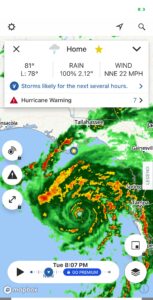 While we were soaking in all the sights (and sounds and smells, when it comes to the sea lions) of the Monterey Peninsula, the warm waters of the Caribbean and Gulf decided to cook up a hurricane for us. We prepared our home for a storm before leaving for the summer by bringing all patio furniture inside the house and placing items like garbage cans in our fenced storage area, but clearly we would prefer not to have any storm activity at all. While we spent several days nervously checking forecasts, ultimately there was nothing we could do from California; I actually appreciated not having to make a decision about evacuation. Hurricane Idalia swept northward, inexorably growing stronger while our home stayed “in the cone,” but ultimately the storm passed just east of us. Neighbors report that our area experienced little more than typical summer thunderstorm conditions thanks to being on the weaker side of the storm, so we do have a house to return to.
While we were soaking in all the sights (and sounds and smells, when it comes to the sea lions) of the Monterey Peninsula, the warm waters of the Caribbean and Gulf decided to cook up a hurricane for us. We prepared our home for a storm before leaving for the summer by bringing all patio furniture inside the house and placing items like garbage cans in our fenced storage area, but clearly we would prefer not to have any storm activity at all. While we spent several days nervously checking forecasts, ultimately there was nothing we could do from California; I actually appreciated not having to make a decision about evacuation. Hurricane Idalia swept northward, inexorably growing stronger while our home stayed “in the cone,” but ultimately the storm passed just east of us. Neighbors report that our area experienced little more than typical summer thunderstorm conditions thanks to being on the weaker side of the storm, so we do have a house to return to.
Next: We fly back to North Carolina and drive home to Florida.
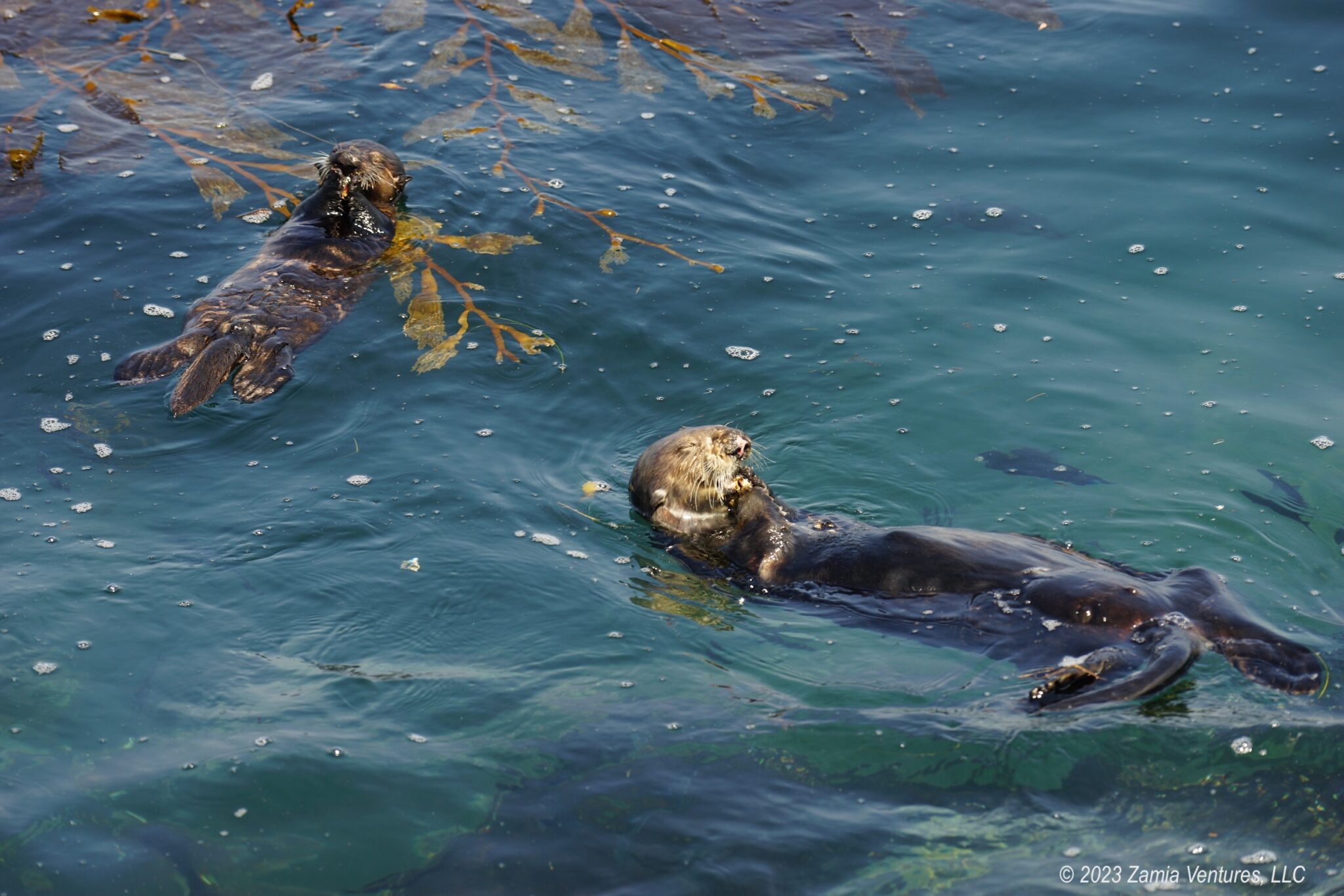
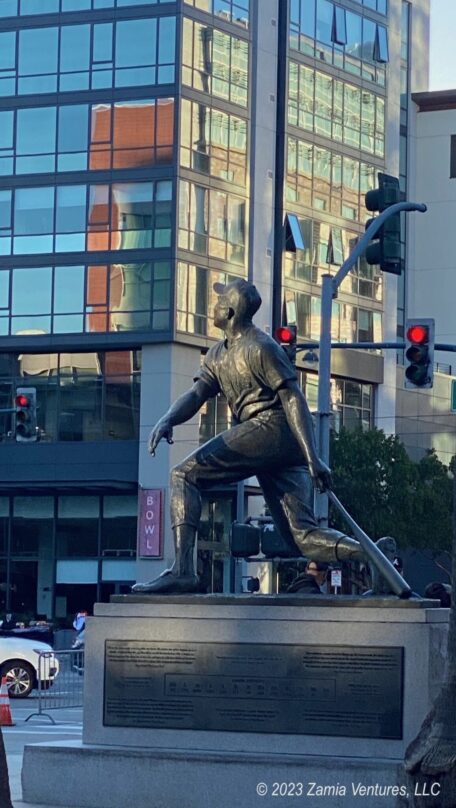
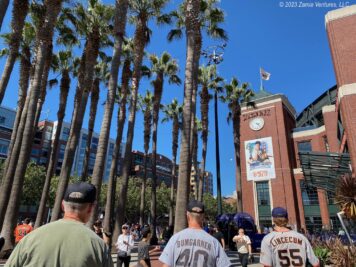
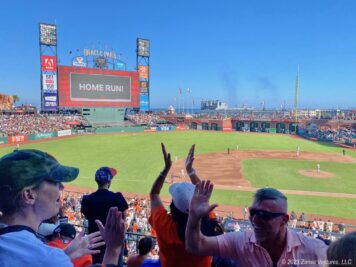
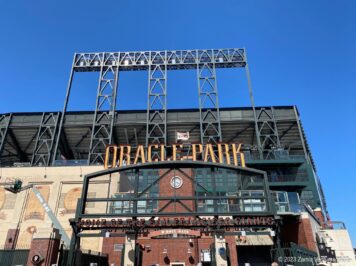
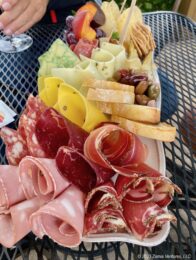
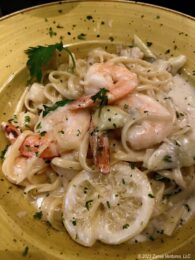
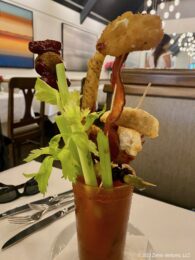
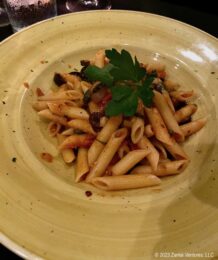
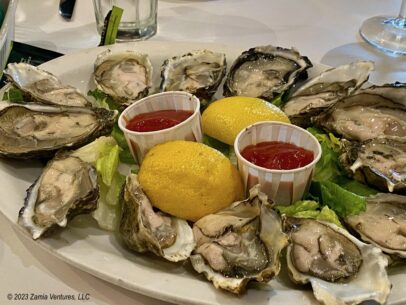
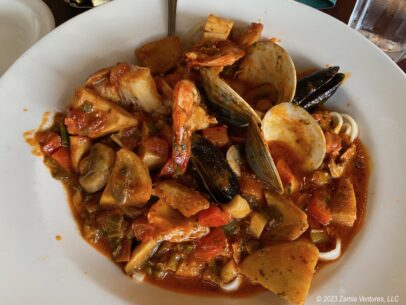
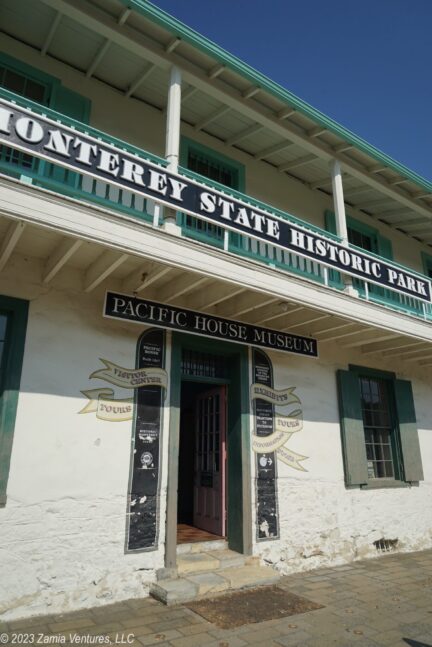
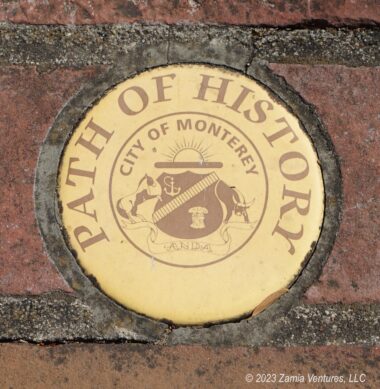
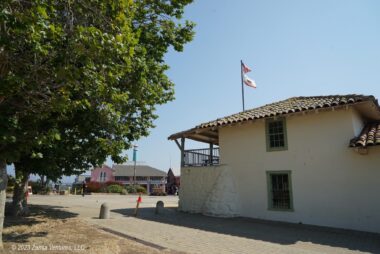
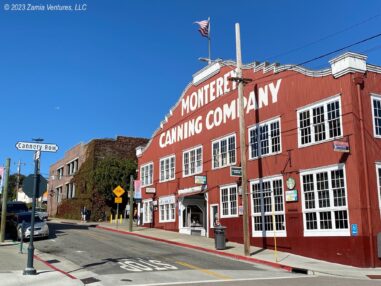
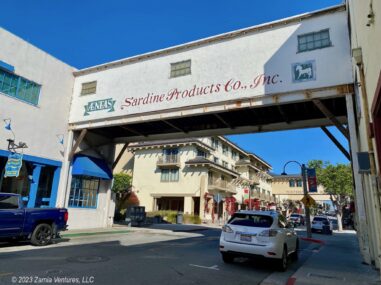
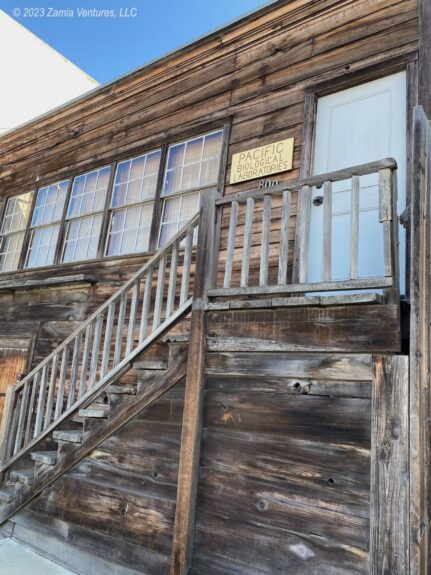
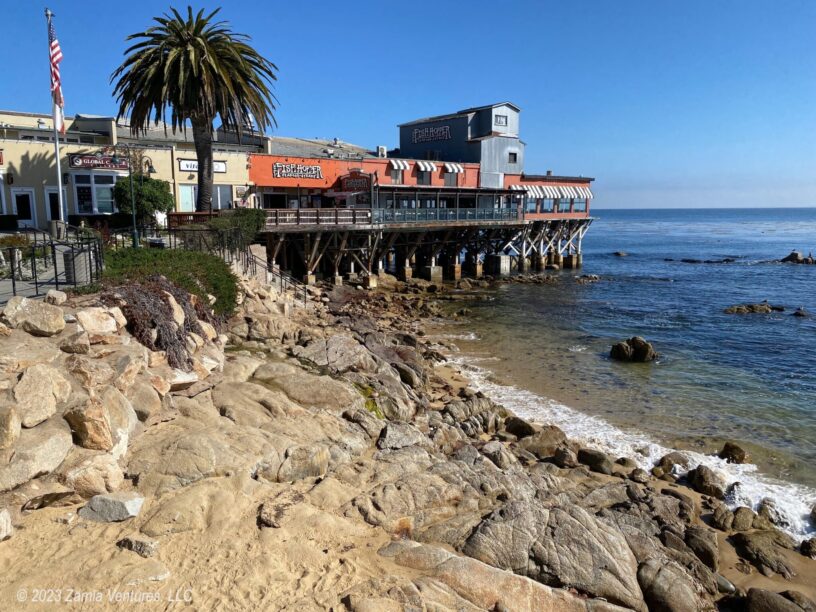
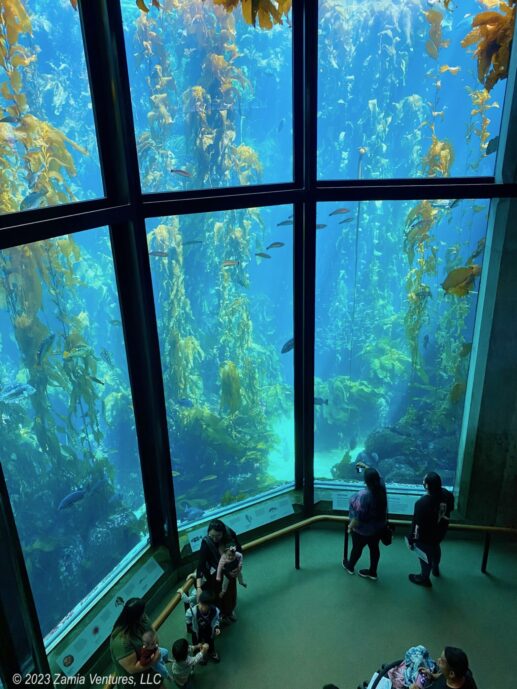
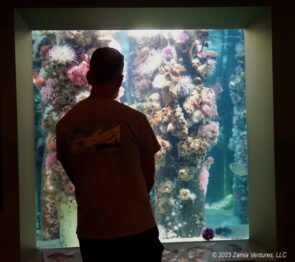
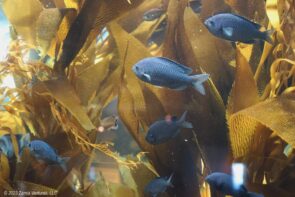
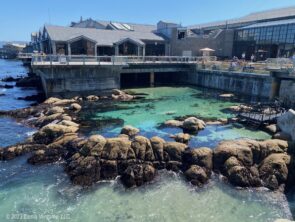
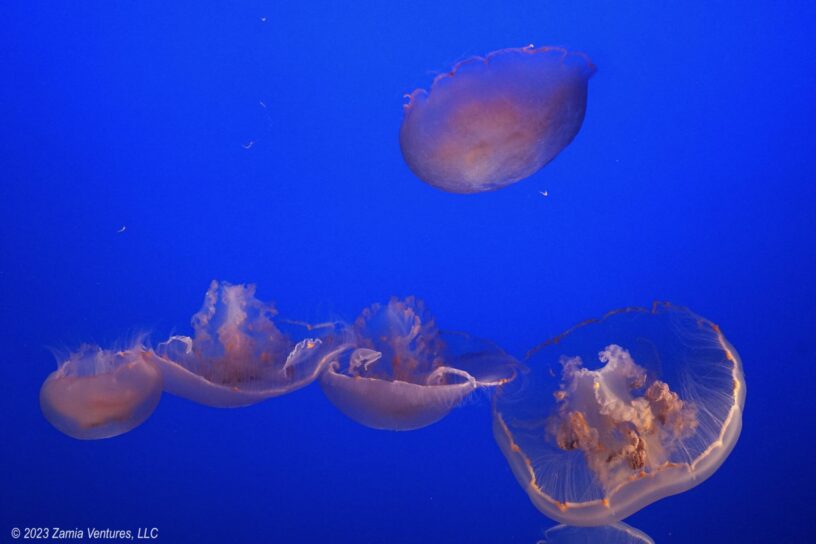
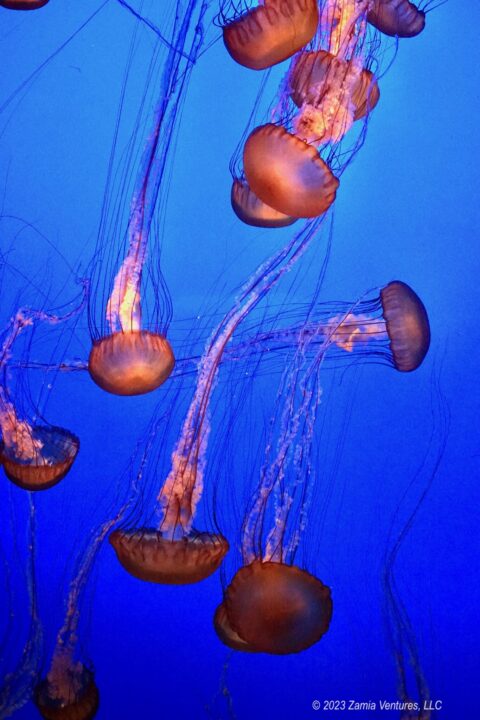
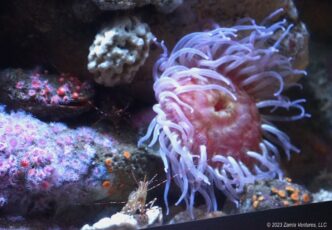
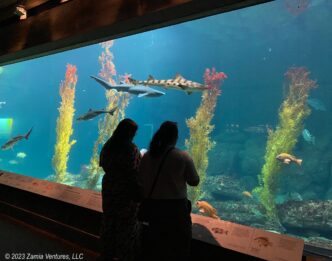
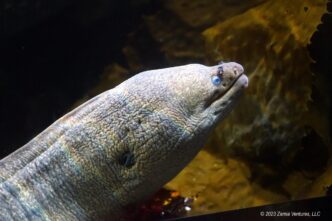
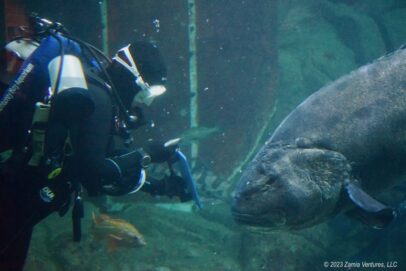
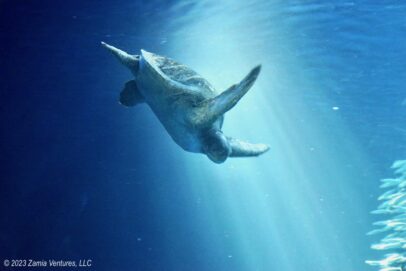
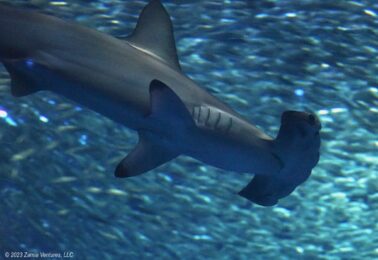
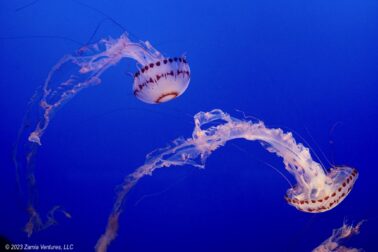
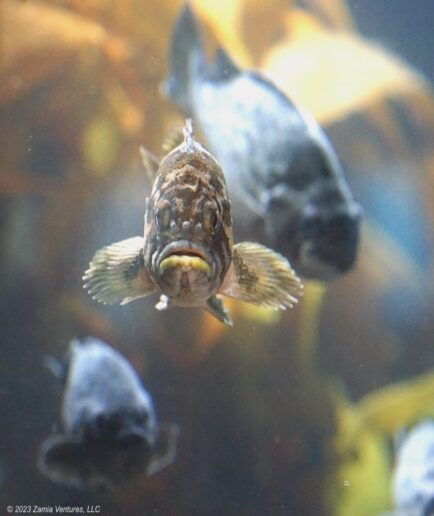
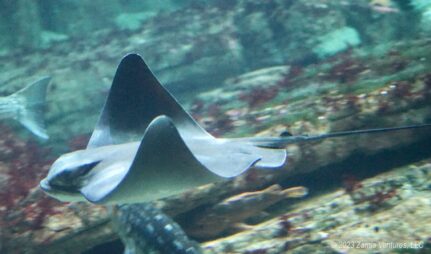
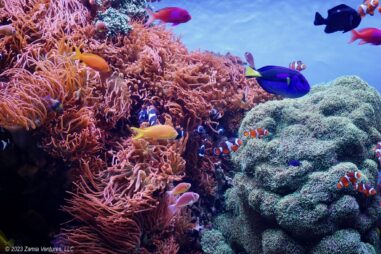
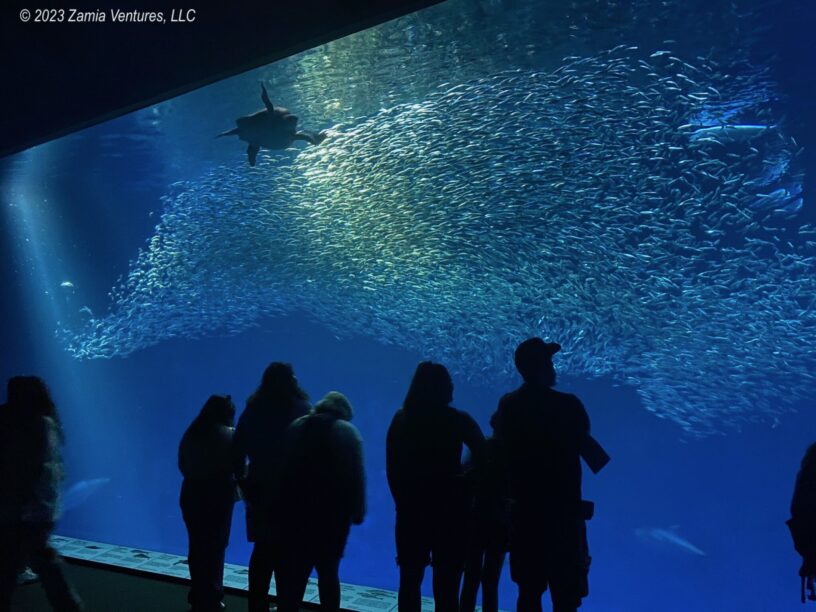
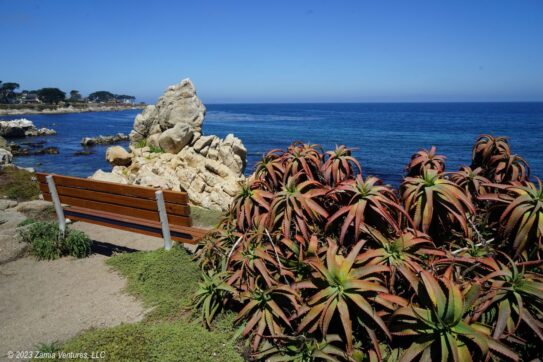
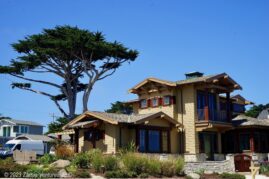
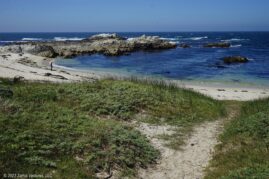
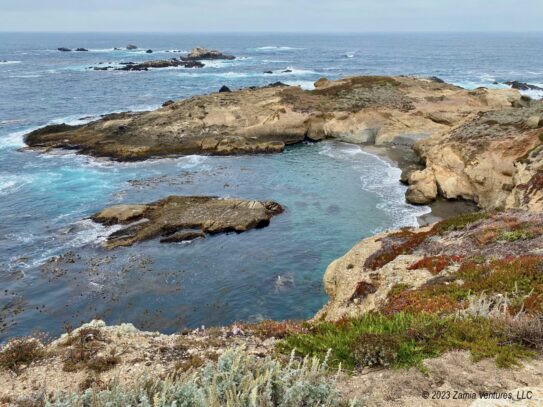
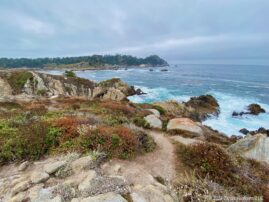
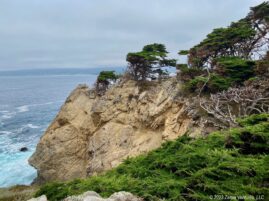
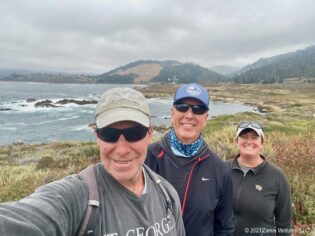
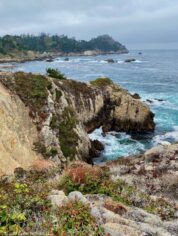
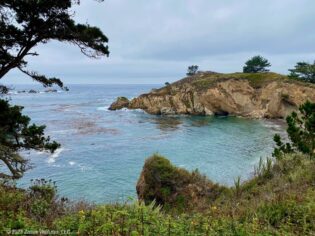
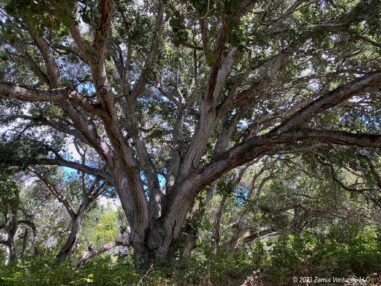
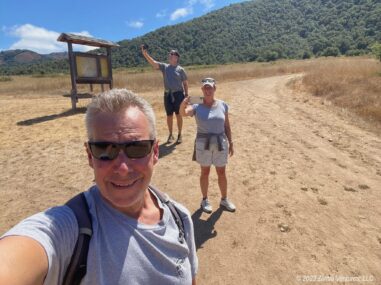
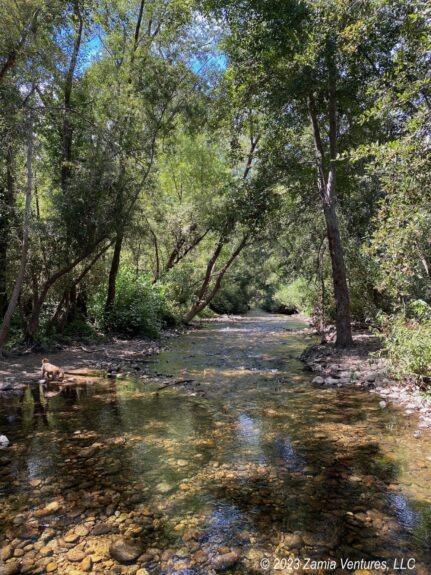
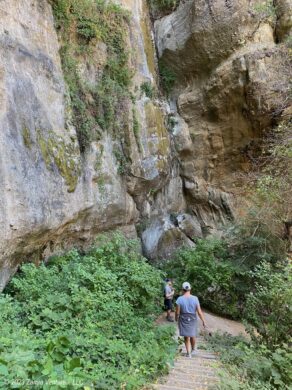
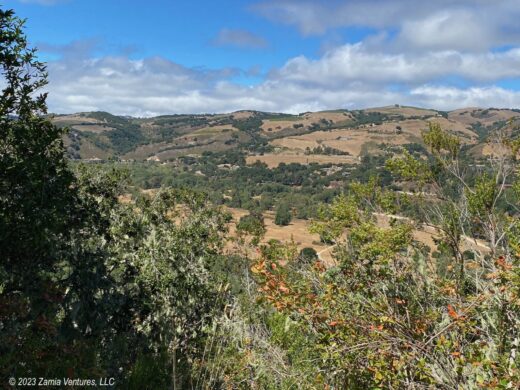
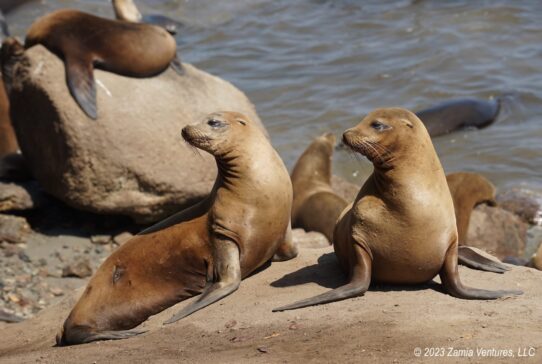
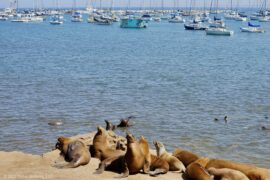
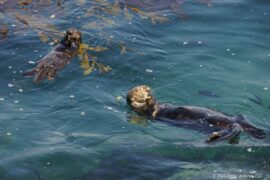
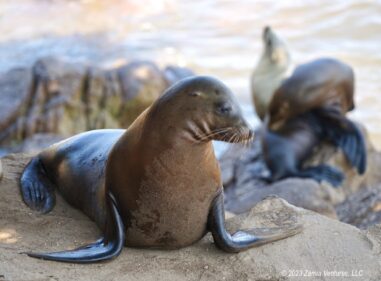
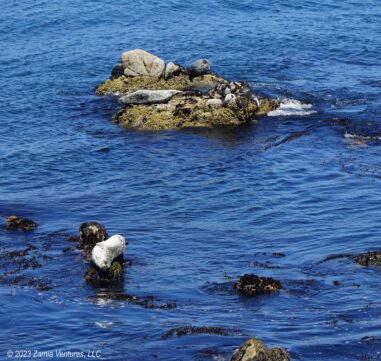
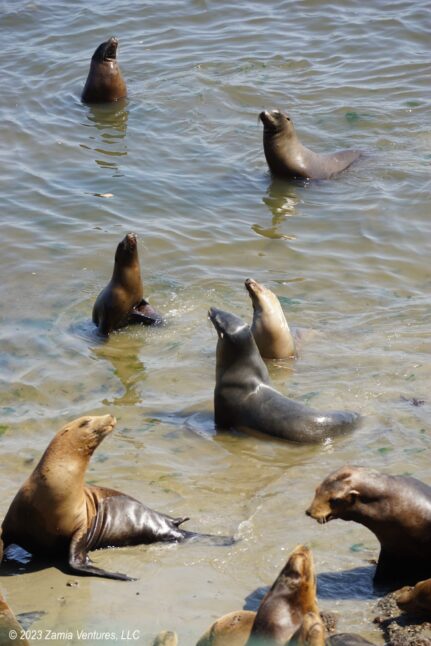
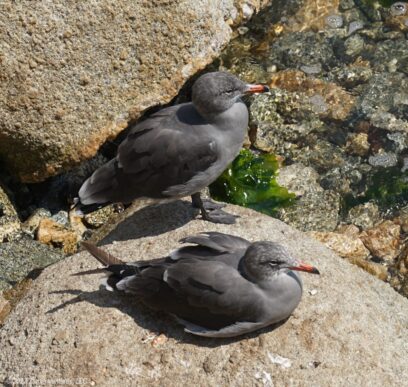
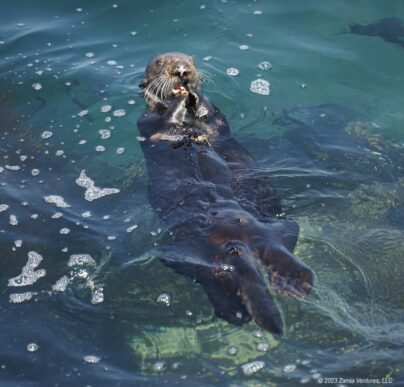
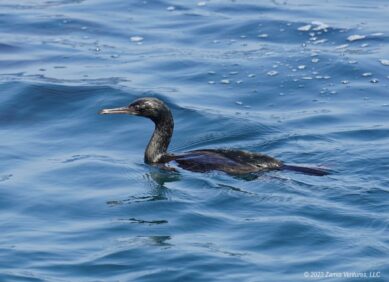
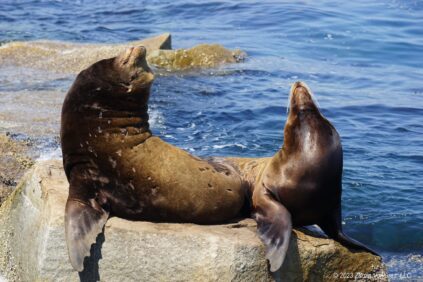
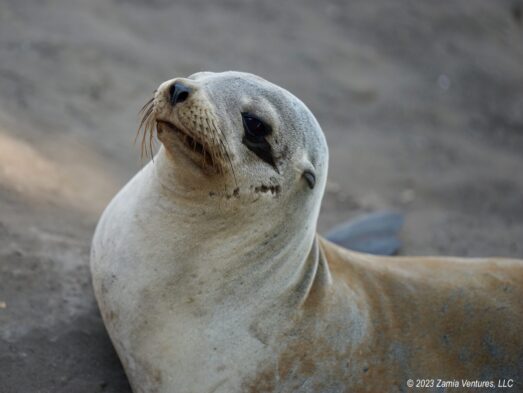
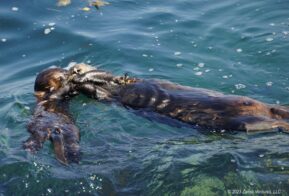
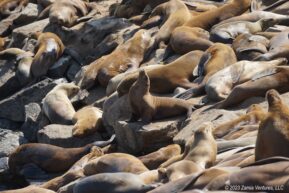
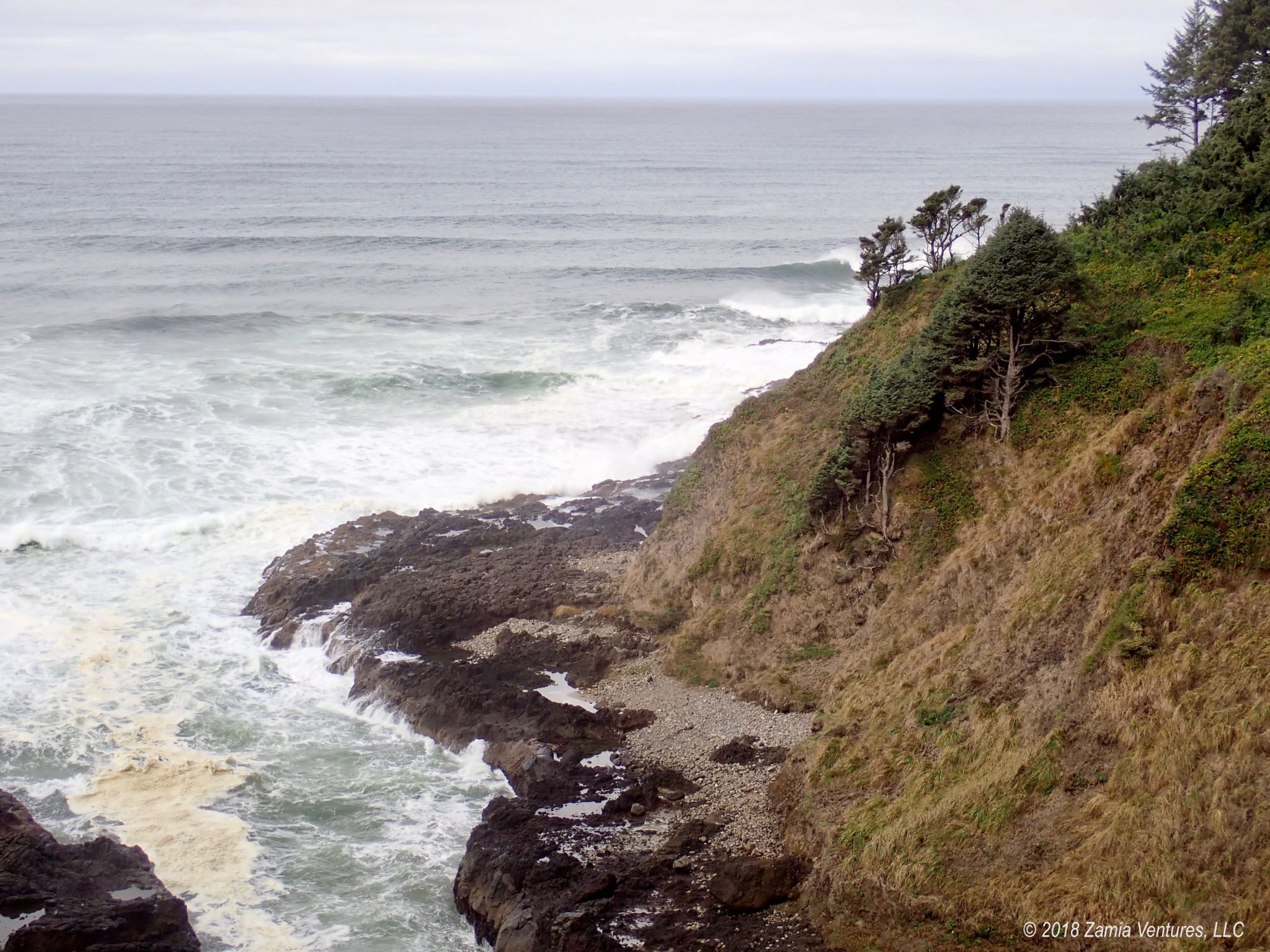
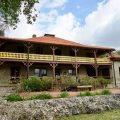
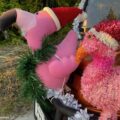
Well, you had me at “otters” but there was plenty to enjoy with this post. The food, the shorelines, the baseball, the wildlife, the food. Wait… sorry.
The aquarium photos are just mesmerizing. I had seen the jellyfish one on Instagram, but some of these others are just as captivating. You’re right about the displays, and I honestly had no idea there was a “training” aspect to taking care of the ocean wildlife. What a job description, huh? “I’m a fish trainer.” LOL.
Speaking of jobs, am I the only one who feels bad for the umpire? Can you imagine having 30,000 people telling you you suck at your job? Brutal.
Glad you guys had a good trip!
The fish training at the aquarium was fascinating! In addition to the examples we saw in person, when we watched the feeding at the “open sea” exhibit — the big one with the turtles and hammerheads and huge tuna — they showed a brief video of the stingrays being fed. The rays surface at the side of the tank under a colored target, TURN OVER, and present their mouths to receive nuggets of salmon. I mean, I would do a lot of things for tasty fresh salmon, so who am I to judge, but it was astonishing to see.
I have to say that the food in California was a revelation. We’ve been there before, but eating farm-fresh produce at the end of summer was a whole new level of enjoyment. No wonder California leads the nation in agricultural output of fruits, vegetables, and nuts.
Yes, you are the only one who feels bad for the umpire.
Oh, goodie!!! We will be in the Monterey area in January, and now we have even more to look forward to thanks to your explorations and recommendations. How nice that you got to visit family, see a favorite team play, stuff your faces with some of your favorite dishes, AND miss the hurricane. I know how nerve-racking it was to watch that all unfold. All told, what a wonderful summer adventure you’ve had!
I know you guys will love the Monterey area — the scenery is breathtaking and there is no shortage of trails. The mountains aren’t going to provide quite the same elevation gain that you’re used to, but you can definitely find trails with some challenging terrain. Also, don’t forget to eat delicious seafood. The family really likes the Sea Harvest Fish Market in the Safeway plaza in Carmel (off Rio Road). I can’t wait to read about your trip!
We are obviously quite relieved that the hurricane turned out to be insignificant for us, though keenly aware that things easily could have gone differently. There was a certain zen-like calm that came from knowing that there was absolutely nothing we could do…. but that didn’t stop me from constantly checking the National Hurricane Center website!
Wow, what a fantastic week in California to cap off your summer adventures! It looks like you had perfect weather and you did EVERYTHING. The area around Monterey and Carmel is one of our favorites. I remember the first time I saw Point Lobos many years ago. It was so different from the Florida coastline, and I was enthralled. And the Monterey Bay Aquarium is extraordinary. You just reminded me how relaxing it is to watch sea nettles…better than any meditation practice!
You’re right, sea lions are incredibly stinky. And loud. You got great photos, though. And how fun that you watched a mama otter teach her baby how to fix dinner! It cracks me up to watch them pounding shellfish on their chests. Did you know that they carry a favorite stone in an armpit pocket?
I’m so glad the hurricane bypassed you. I know your home will withstand hurricane force winds, but it’s not fun to clean up after a storm. Enjoy home and all of your great summer memories!
We certainly got lucky with the weather. It was really perfect every day except one, but I suppose one can’t visit the California coast and never see fog. We enjoyed the scenery, the food, the architecture, and the history very much. I was a little peeved about how much it cost to visit the aquarium, but we got our money’s worth by staying the entire day, seeing lots of programs, and visiting the jellies multiple times. 🙂
The marine wildlife around the bay was incredible. Initially I just experienced it like being at home — gulls and pelicans flying over the hotel. But then when we spent time along the shore I realized how much more was going on. A whole new species of cormorant! And different gulls! Seals! Sea lions! Otters! (Thanks for the trivia about the otter pockets, by the way). No wonder we saw so many people using the public beaches as entry points for walk-in scuba diving. The kelp forests were just off the beaches and I’m sure there were incredible ecosystems to be explored under water. Definitely a rich environment, and one that I’m glad we finally had the chance to see in person.